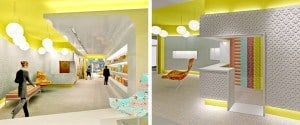Blog
How Ceilings and Other Architectural Designs Affect Mood

How can a ceiling can affect one’s mood?
“If you’re in the operating room, maybe a low ceiling is better.”
Architects have always argued that the structure of building can affect our thoughts, feelings and behaviors. But now, behavioral scientists have facts to back up those claims.
What is more, researchers are just getting started. In 2007 Joan Meyers-Levy, a professor of marketing at the University of Minnesota, reported that the height of a room’s ceiling affects how people think.
Her findings proved that people completed tasks more accurately in the room with lower ceilings and came up with more abstract ideas when put in a room with taller ceilings.
“Ceiling height affects the way you process information,” Meyers-Levy says. “You’re focusing on the specific details in the lower-ceiling condition.”
Because her earlier work had indicated that elevated ceilings make people feel physically less constrained, the investigator posits that higher ceilings encourage people to think more freely, which may lead them to make more abstract connections.
The sense of confinement prompted by low ceilings, on the other hand, may inspire a more detailed, statistical outlook—which might be preferable under some circumstances. “It very much depends on what kind of task you’re doing,” Meyers-Levy explains. “If you’re in the operating room, maybe a low ceiling is better. You want the surgeon getting the details right.” Similarly, paying bills might be most efficiently accomplished in a room with low ceilings, whereas producing great works of art might be more likely in a studio with loftier ones. How high the ceiling actually is, Meyers-Levy points out, is less important than how high it feels. “We think you can get these effects just by manipulating the perception of space,” she says, by using light-colored paint, for instance, or mirrors to make the room look more spacious.
Lighter, brighter spaces with full-spectrum lighting increase alertness and help guard against depression and, later in life, against cognitive decline. Conversely, rooms intended mainly for relaxation should feature darker colors, dimmer lighting, fewer sharp edges on furniture and bookshelves (these activate the part of the brain that alerts us to danger), and more carpeting.
Overall, lower ceilings improve performance in detail-oriented tasks, whereas high ceilings encourage abstract creative thought. Views of nature, particularly distant trees and green space, are proven to significantly aid in creativity, concentration and memory (and in combatting ADD in children). It’s worth reading the whole article (click below).







